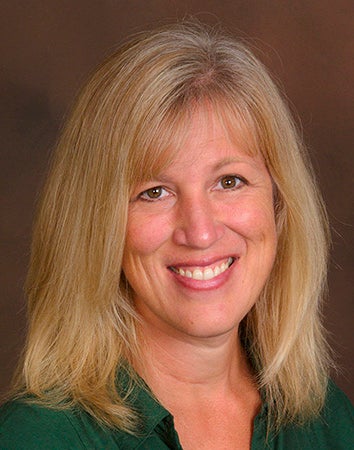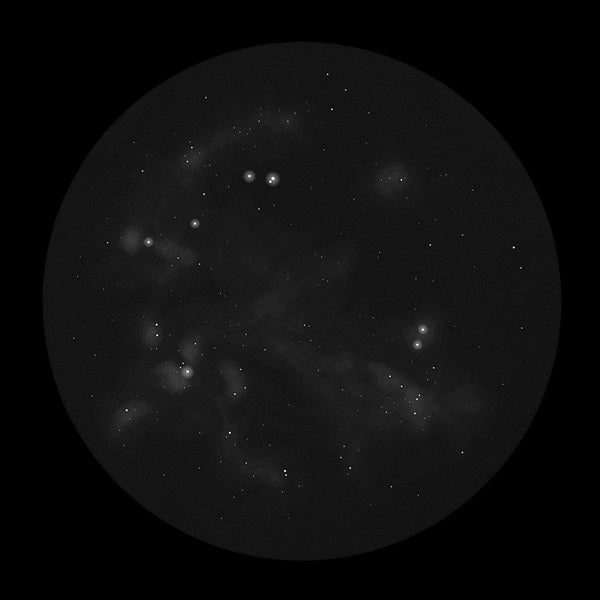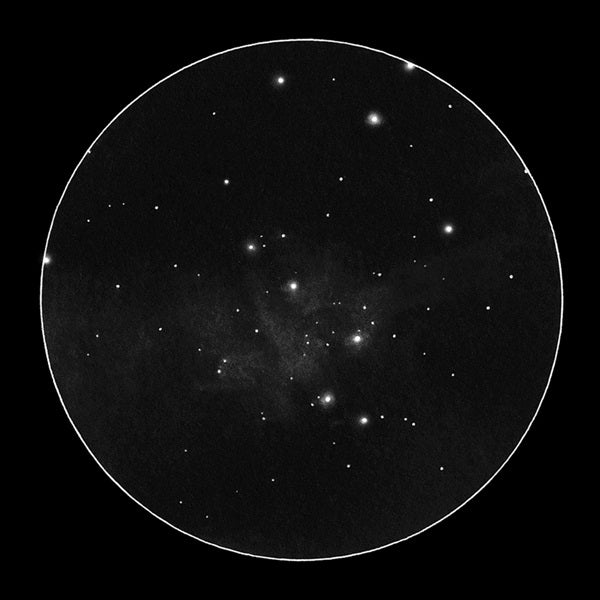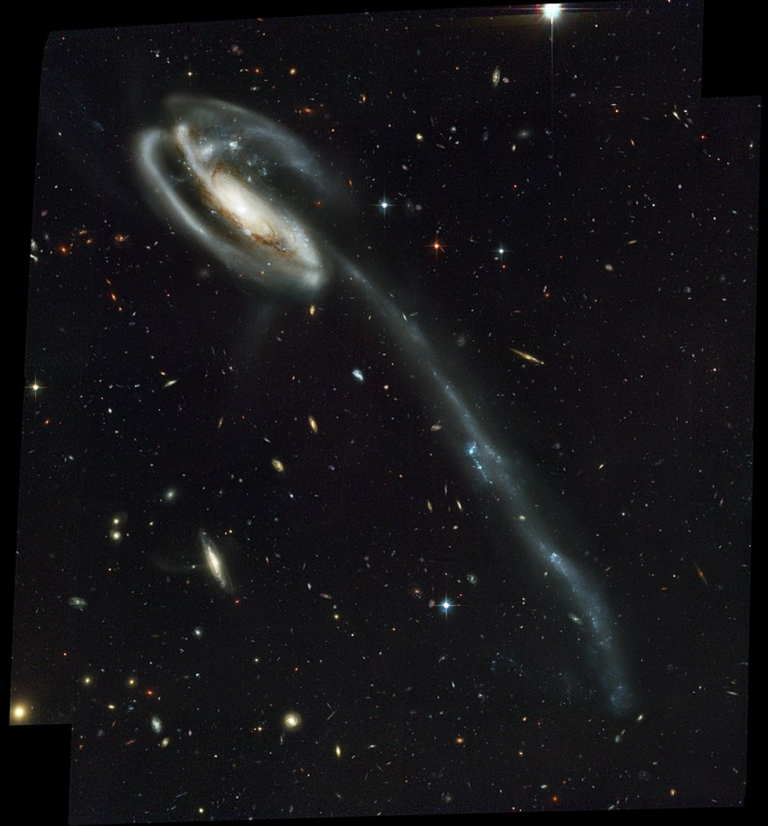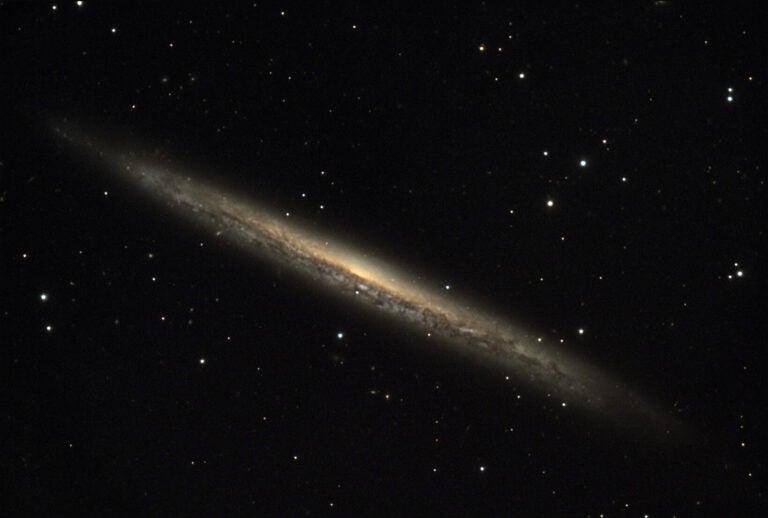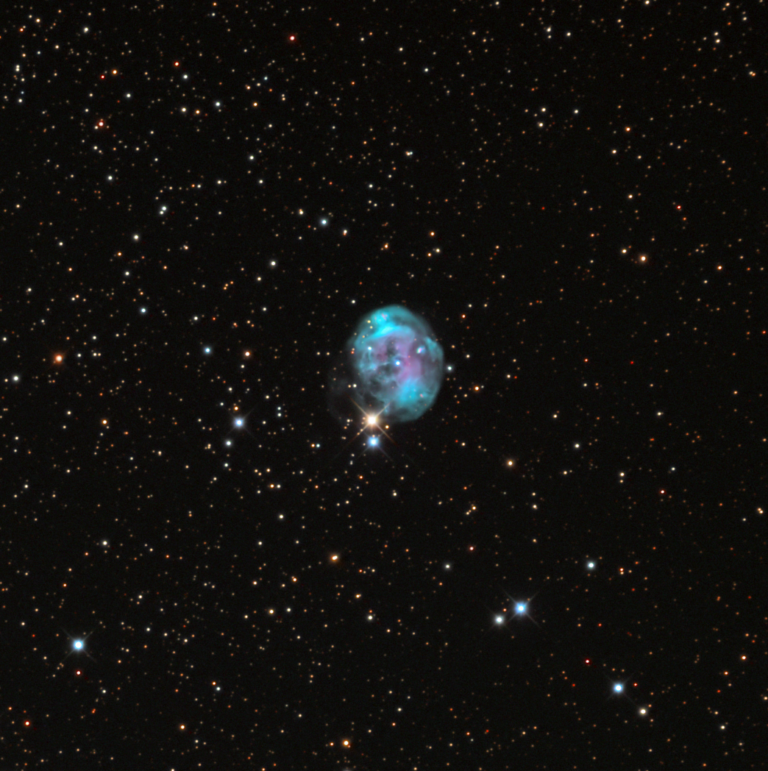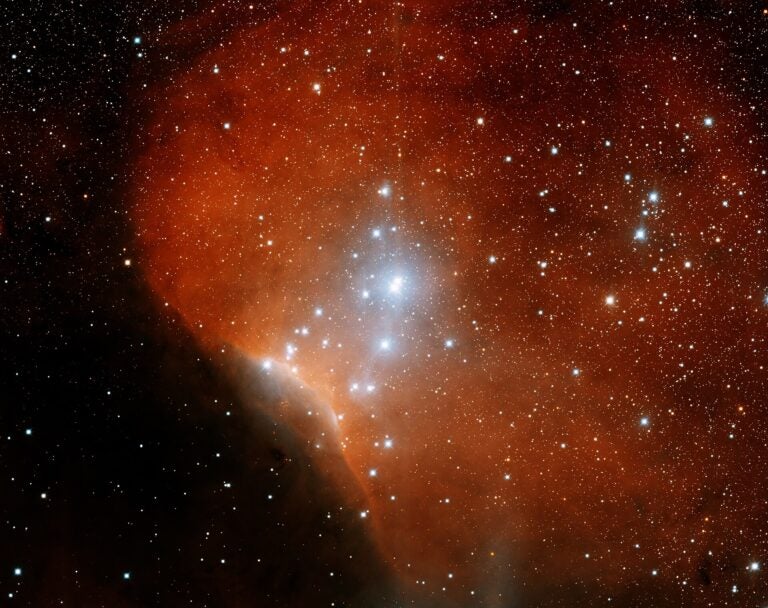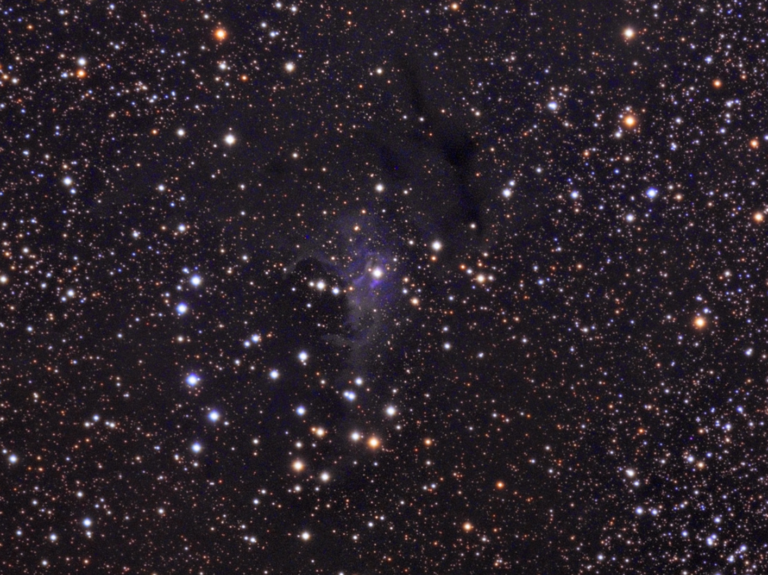This beautiful heart-shaped emission nebula covers more than three and a half times the area of the Full Moon in the constellation Cassiopeia. Observers and imagers often pair it with the Baby Nebula (IC 1848), which lies nearby. Another pair of emission nebulae, IC 1795 and NGC 896, lies at the western point of the heart, making the complex a prominent active stellar nursery within the Perseus Arm of our galaxy.
At the core of IC 1805 lies the newborn open cluster Melotte 15, a scant 1.5 million years old. It’s composed of more than 40 loose stars across a diameter of 22′. Stellar winds and ultraviolet radiation from the cluster’s massive stars contour the nebula’s glowing hydrogen clouds to form its heart shape.
During my observation, the focus of the sketch was Melotte 15. I created the star field with pen and graphite before I began observing through an OIII filter. I then used a blending stump to draw the hazy glow. This simple technique provides a finished sketch directly at the eyepiece. You then can scan the sketch, remove stray markings with photo-editing software, and invert the image to represent the eyepiece view.
Rony De Laet of Bekkevoort, Belgium, provided a different perspective. Using an UHC filter, he chose the northern half of IC 1805 for a low-magnification view that included both Melotte 15 and open cluster NGC 1027.
His technique has advantages. Once you become accustomed to using the program’s tools, you can create glows around stars, emphasize stars with different magnitudes, and add colors with ease. If you make a mistake, simply press “Undo” or revert to a previously saved version. Perhaps the handiest element is the ability to draw in layers — one for the background, another for the star field, and yet another for the nebulosity. You can make adjustments to any layer without affecting the others.
Now and again, try venturing out of your comfort zone by dabbling with a new technique or type of object. You’ll expand your skill set and might just find the new method more rewarding.

